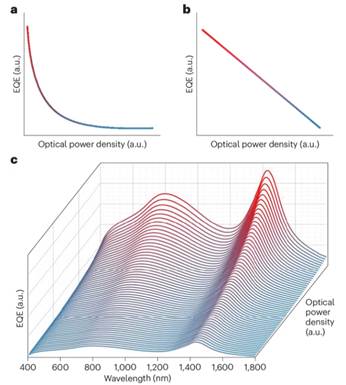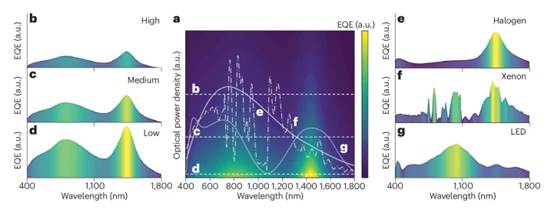A team of young faculty members from Shenzhen Technology University (SZTU) has published a critical comment article in the prestigious international journal Nature Electronics, addressing the pressing issue of inconsistent testing standards for emerging photodetectors. The article, titled “Time to standardize external quantum efficiency testing of emerging photodetectors,” offers constructive recommendations to steer the field towards unified and reliable performance evaluation.
The comment article is co-authored by Assistant Prof. Tang Haodong from the College of Integrated Circuits and Optoelectronic Chips and Associate Prof. Chen Wei from the College of Engineering Physics. This marks the first time SZTU young faculty have published a comment paper in this high-impact journal as both first author and corresponding author.

Nonlinear and linear power responses in photodetectors [Photo/https://doi.org/10.1038/s41928-025-01446-7]
The article provides a clear comparison of the two prevalent external quantum efficiency (EQE) measurement methods: direct testing and indirect testing. In direct testing, the device is illuminated at discrete wavelengths using a monochromatic light source, and the incident optical power density at each wavelength is carefully calibrated to a consistent level using a high-precision power meter and device response to directly obtain the EQE value for each wavelength. Indirect Testing uses a standard detector to calibrate the light source uniformly, then compares the photocurrent of the device under test with that of the standard detector to indirectly derive the EQE data. While more efficient, this method is more susceptible to light source fluctuations and system-level discrepancies.

EQE results obtained by direct and indirect testing methods [Photo/https://doi.org/10.1038/s41928-025-01446-7]
The SZTU research team proposes a more operational framework for EQE testing. They advocate that researchers first verify the linear response range of their devices, clearly define the measurement path and assumptions used, and transparently report key parameters such as source spectral distribution and power density in their publications.
Standardized EQE testing will help build consensus among researchers, equipment manufacturers, and application companies, laying a solid foundation for the sustainable development of the photodetection and imaging industry. This research direction will bolster China’s autonomous innovation and standard-setting in fields like optoelectronic information, infrared imaging, and intelligent sensing.
Drafted by Daisy(姚琦)/ International Cooperation and Exchanges Department
Revised by Daisy(姚琦)/International Cooperation and Exchanges Department
Edited by Brian(郑斌)/ International Cooperation and Exchanges Department
